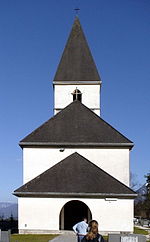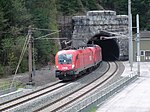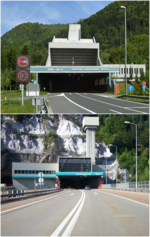Burgruine Ras
Austrian castle stubsCarinthia (state) geography stubsCastles in Carinthia (state)

Burgruine Ras is a ruined castle in Carinthia, Austria. It was first documented in 1171. Only the remnants of an encompassing wall and two round towers are present today.
Excerpt from the Wikipedia article Burgruine Ras (License: CC BY-SA 3.0, Authors, Images).Burgruine Ras
Kirchenweg, St. Jakob im Rosental
Geographical coordinates (GPS) Address External links Nearby Places Show on map
Geographical coordinates (GPS)
| Latitude | Longitude |
|---|---|
| N 46.54545 ° | E 14.04092 ° |
Address
Rasburg, Turne
Kirchenweg
9184 St. Jakob im Rosental
Carinthia, Austria
Open on Google Maps










